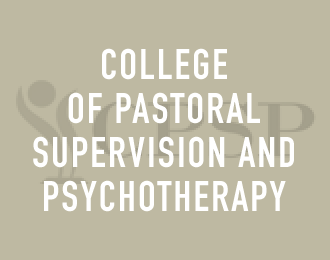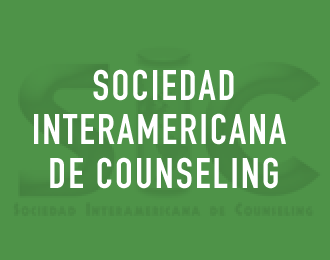Three gifts from the wise people of the East
Esteban Montilla | 6 enero, 2025

A new religion: Christianity
The formation of a new religion, later known as Christianity, occurred over about one hundred years (25 A.D.- 120 A.D.). This new faith group was based primarily on the teachings of Jesus of Nazareth and his first disciples. This movement was diverse from the very beginning, but it was united by a yearning for freedom and a better life for all people through justice and love.
The predominant religion for that region and at that time was Judaism, which based its doctrines and practices on the TaNaK (Torah, Prophets, and Writings) or Hebrew Bible approved by the political and ecclesiastical leadership of the time. There were dissident Jewish groups who considered it necessary to make another religious proposal that was detached from the systems of powers subjugated to the Roman Empire. These dissidents suggested that the local governors, although of Jewish ethnicity, were agents of the Roman State. They should then be viewed with suspicion since the loyalty of these leaders was more to their interests than to the welfare of the Jewish people.
This is how opposition or dissident groups proliferated and resorted to broader sacred literature to support their new political and religious proposals. One of these dissident groups was apocalyptic, which framed the confrontations between political sides as part of a cosmic war between good and evil (Collins, 2023). This opposing minority group resorted, in addition to the Hebrew Bible, to other sacred books not accepted by the majority, such as the Book of Daniel, Judith, Baruch, Tobit, Maccabees, Book of Adam and Eve, The Assumption of Moses, Book of Jubilees and Enoch (Pagels, 1998). These apocalyptic books included stories and narratives from other cultures, such as Greek, Persian, and Egyptian, that the followers tried to interpret in the light of the Hebrew Bible. One finds the philosophy and beliefs later developed by Christians in these books.
Several political-religious strands existed, from those who proposed military revolts to those who opposed them more peacefully. Some dissident groups, such as the Essenes, completely separated themselves from the cities’ political and day-to-day lives. Others considered it important to maintain a spirit of protest and resistance by embracing a simple and pious modus vivendi and installing a different intellectual culture. To this group belonged John the Baptist and later Jesus of Nazareth.
Based on the apocalyptic holy scriptures mentioned above, these leaders developed a framework of religious beliefs that presented the political reality of the time within a heavenly context. These dissenting writings spoke of a battle that occurred in heaven between the good angels and the evil angels. Upon losing, these rebellious angels or demons are sent to planet Earth, which is how war moves to this world (Pagels, 1995).
Another key teaching of these dissident groups was that a Messiah would come who could liberate them from political, social, and spiritual oppression. This Messiah would be a messenger from God with the power to confront the demonic forces and their representatives. This concept of a Messiah as a universal savior and liberator of the power of sins was a foreign idea to the Old Testament; the Christian movement resorted to the apocalyptic books to develop its messianic theory and faith system. Once these religious positions were elaborated, they tried intertwining them with the Hebrew Bible, seeking the respect given to those authorized Sacred Writings.
However, as most of the Jews practicing the faith did not value those apocalyptic books, this new faith did not have much attraction within biblical or traditional Judaism. Christianity then had to leave the borders of that region to find followers in other cultures. This is how religion currently has about two billion members in the world, but the Christian population in Israel and Palestine does not reach 2%.
This new faith proposal, Christianity, was very different from biblical or traditional Jewish religion in that it suggested teachings such as the importance of women in political and religious leadership, the cosmic conflict between good and evil, the action of demons in human affairs, baptism, cosmic and messianic salvation, the resurrection of the dead, hell, and eternal life in heaven.
Indeed, these new doctrines had no basis in the Hebrew Bible or canonical Old Testament, hence the rejection by the Jewish religious leadership in power. These cross-cultural beliefs were widely accepted in other regions with more religious openness. However, some authors of the Christian Writings (New Testament) were still hoping that these teachings would have receptivity in the Jewish majority and, therefore, tried to connect some of these doctrines to the Hebrew Bible (Old Testament), without much success.
The author of the Gospel of Matthew tries to make that bridge by keeping in mind the Jews who respected the Torah and who could be open to this new religious proposal. This inspired author places a gripping narrative by being the only one to refer to the wise people’s visit from the East. This intercultural element in chapter 2 follows the bold suggestion in chapter 1, where, in addition to presenting women in the genealogy of Jesus of Nazareth, he proposes that his ancestry is connected to interracial historical figures such as Abraham and David.
Wise people from the East
The word magician used by the author of Matthew is of Persian origin. It referred to wise people, men or women who served as priests, prophets, astronomers, astrologers, and interpreters of dreams. One of the key teachings of Persian culture was the coming of a Messiah, as suggested by Zoroaster-Zarathustra (Kriwaczek, 2003).
Interestingly, the word messiah is rare in the Hebrew Bible or Old Testament, and one of the few times it is used is to refer to a Persian ruler named Cyrus (Isaiah 45:1-2). This is why these wise people are connected as coming from the East or Persia. The biblical account does not say how many there were, makes no reference to the sex of the wise people, nor does it mention age. It simply says that after the birth of Jesus of Nazareth, these wise people followed a star that eventually led them to Bethlehem of Judah.
The account also says that the visit of these wise people was intended to pay homage to the Messiah, who had been born. “And the star which they had seen rising went before them until, at last, it stopped over the place where the child was. When the wise men saw the star, they were overjoyed. Then they went into the house and saw the child with Mary, his mother, and they knelt and paid him homage” (Matthew 2:9-11, DHH). The other purpose of the author of Matthew, following his proposal for a new intercultural religion, is that this messiah and messenger of God, besides being interracial (because of his Jewish, Galilean, and Moabite blood), enjoys the approval of other powerful cultures such as the Persian (Brown, 2002).
These wise people, upon fulfilling their mission to pay homage to the Messiah who had been born, returned to their land (Matthew 2:12). Christian creativity, some 300-600 years later, polished this narrative by suggesting that they were three men, that their names were Melchior, Gaspar and Balthasar, that they were three kings who came from Persia or Babylon, from India and Arabia-Yemen, that one of them was young, one middle-aged and one older adult.
Concentrating on these late constructions of the story can easily lose the author of Matthew’s cross-cultural intent. It is important to maintain the evangelist’s idea that Jesus of Nazareth was the Messiah, as referred to in those apocalyptic writings; he was a messenger of God and a unique human being, respected even by other cultures.
The gifts of the wise people
The wise people from the east brought three gifts. “They opened their chests and offered him gold, frankincense, and myrrh” (Matthew 2:11, DHH). This act is full of symbols that point to the financial well-being, good health, and peace that a just, kind, and wise leader can bring. Gold, a metal of immense value and difficult to find in nature, has to do with wealth, power, and a good economy. Frankincense is a plant resin from the Boswellia sacra tree with aromatic and healing properties used over the centuries to treat chronic illnesses such as arthritis, melancholy, and anxiety. Myrrh is another resin or gum from the Commiphora myrrha plant used as a perfume, analgesic, and relaxant. In the Arab world, a hadith recommends using myrrh to fumigate the houses and thus run the mosquitoes that can be disease vectors.
Frankincense and myrrh were often mixed to increase their medicinal potential. In the religious environment, myrrh was part of the plants that were added to vegetable oil to anoint sick people, to anoint the new leaders of society, and to embalm the dead. Myrrh is a central ingredient for the oil used to anoint priests and rulers in the Hebrew Bible. “The Lord spoke to Moses and said, ‘Take the following fine spices: six kilograms of liquid myrrh, three kilograms of fragrant cinnamon, three kilograms of fragrant reed, six kilograms of cassia, and four liters of olive oil, according to the official valuation of the sanctuary. As you would with perfume manufacturers, you will make an aromatic oil mixture with these ingredients. This shall be the holy anointing oil” (Exodus 30:22-25, NIV).
The rich symbolism behind these three gifts of gold, frankincense, and myrrh speaks of the longing of the oppressed and marginalized people for a leader, a Messiah, who could liberate them from the tyranny of political leaders, the corruption of dominant religious groups, and the impunity prevalent in society. According to Matthew’s Gospel, Jesus of Nazareth was the new leader, the Messiah.
Conclusion
The three gifts brought by the wise people representing economic well-being, health, and peace continue today to be the yearning of many people who suffer from fragile economies, inefficient health systems, and a state of insecurity that robs them of peace. Today, more than ever, we need political executives, religious leaders, and agents of change in society who are committed to justice, genuinely interested in the welfare of the people they serve, respect people’s freedoms, and promote good living.
Today, let us be those wise people who bring economic well-being, health, and peace to our families, friends, colleagues, and strangers. At the beginning of this new year, locate three people who, you believe, did not receive any gift, and present them with a gift that can bring them joy. Let us find Jesus of Nazareth by locating three people who live on the margins and make a slight difference in them. “I tell you the truth, whatever you did for one of the least of these brothers of mine, you did for me” (Matthew 25:40, NIV). Let us be wise men and women in this new year.
“So, in everything treat others as you would have them treat you,” Jesus of Nazareth (c. 5 B.C.-A.D. 30), Matthew 7:12.
“Do unto others as you would have them do unto you.” Zoroaster -Zarathustra (c. 1000, B.C.)
References
Brown, R. E. (2002). Introducción al Nuevo Testamento. I. Cuestiones preliminares, evangelios y obras conexas. Madrid, España: Editorial Trotta.
Collins, J. J. (2023). La Imaginación Apocalíptica: Una Introducción a la Literatura Apocalíptica Judía. Salem, Oregon: Publicaciones Kerigma.
Kriwaczek, P. (2003). In Search of Zarathustra: The First Prophet and the Ideas That Changed the World. New York, NY: Alfred A. Knopf.
Pagels, E. (1998). Adam, Eve, and the Serpent. New York, NY: Random House.
Pagels, E. (1995). The Origin of Satan: How Christians Demonized Jews, Pagans, and Heretics. New York, NY: Random House.














